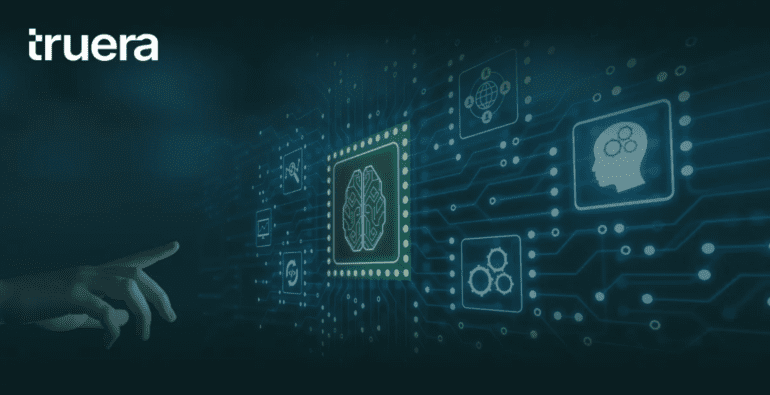TL;DR:
- TruEra is at the forefront of addressing hallucination concerns in AI Large Language Models (LLMs).
- They redefine hallucination as LLMs responding to prompts inaccurately.
- Their approach combines evaluations, tracing, and scalability for comprehensive hallucination management.
- A procedural approach involving Retrieval-Augmented Generation (RAG) aids in ensuring source accuracy.
- Robust monitoring is crucial throughout an application’s lifecycle to prevent isolated issue fixation.
- Challenges lie in scaling evaluations and addressing multi-modal hallucinations.
- Competitors may introduce similar AI development capabilities in the future.
- The evolving AI-powered assistant landscape requires different approaches to quality assurance.
Main AI News:
In the realm of AI, hallucinations have emerged as a paramount concern for enterprises seeking to optimize the utilization of AI Large Language Models (LLMs) that underpin services such as ChatGPT. The challenge lies in addressing this issue comprehensively, considering the multitude of perspectives. While the obvious recourse is human evaluation, this approach falls short in scalability and incurs high costs.
Over the past six months, several vendors have striven to automate and streamline this process. This article delves into the innovative approach of TruEra, a trailblazer in machine learning monitoring, testing, and quality assurance. TruEra introduced groundbreaking hallucination detection and mitigation workflows as part of a broader open-source framework for LLMs back in March, setting a precedent before the advent of hallucination metrics introduced by competitors like Galileo and Vectara.
TruEra takes a distinctive stance on hallucination, distinct from its peers. Their approach amalgamates components encompassing evaluations, deep tracing and logging, and scalability to larger datasets on an ongoing basis. Shayak Sen, TruEra’s Co-founder and CTO, posits that many existing hallucination management strategies dissect individual facets of the problem, whereas TruEra’s approach reframes the very notion of hallucinations. Sen elucidates:
“Generally, the prevailing definition of hallucination is a language model producing outputs that are factually incorrect. Without a source of truth, this definition is unenforceable. We’ve been promoting a stricter definition of hallucination: the output from a language system is hallucinatory if it responds to a prompt in a way that does not accurately represent a source of truth in a verifiable way.“
This perspective implies that using ChatGPT or any LLM as a question-answering system inherently invokes hallucination since it does not aspire to convey factual truths but generates plausible text, which may or may not align with reality. In essence, generative models’ propensity to hallucinate should be perceived as a feature rather than a flaw.
A Procedural Approach
Sen contends that the path to creating systems that genuinely represent a source of truth lies in enhancing the way retrieval augmented generation fine-tunes interactions with an LLM. In a Retrieval-Augmented Generation (RAG) architecture, an LLM’s role is not to furnish facts but to summarize information gleaned from databases or APIs. In this context, hallucination can be assessed by answering three pivotal questions:
If the answer to any of these questions is ‘No,’ then the system’s output could potentially mislead or prove irrelevant. TruEra’s TruLens approach incorporates hallucination metrics that capture diverse failure modes of LLM-based systems.
Tracking Progress
Establishing a robust system to monitor performance changes over time is imperative as teams experiment with different configurations. Evaluation and monitoring should be pervasive throughout the application’s lifecycle, preventing the tunnel vision of addressing isolated issues while disregarding the broader system quality.
Enterprises can leverage these algorithms from development to production to:
• Instill confidence in handling fundamental edge cases before deployment.
• Utilize evaluations to steer system improvements by prioritizing the root causes of hallucinations.
• Continuously monitor performance to swiftly detect and rectify regressions.
Sen underscores, “Understanding the root causes of the issues helps create a feedback loop that determines what kind of fix you need to make. In either case, it’s important to systematically test your system and track improvements.”
Scaling Challenges
One significant challenge in hallucination research pertains to scale. Evaluations primarily rely on language models, making it arduous to scale up for production. Sen indicates that future research and development will focus on algorithmic scaling of LLM hallucination evaluations, enhancing cost-effectiveness across diverse use cases.
Furthermore, addressing hallucinations encompassing text, code, audio, video, and other data types requires ongoing research and development. Sen elaborates, “As models grow and become more diverse, a lot of the focus is shifting towards multi-modal models, which means that the evaluations need to shift towards multi-modal use cases as well, and we need a new set of tools for what hallucinations mean in a multi-modal setting.”
Anticipating the Future
Efforts to measure and mitigate hallucinations in AI are underway, which is vital for the expansion of generative AI in the enterprise. It’s conceivable that competitors in AI development will introduce similar capabilities in the near future, either directly in the tool or via plug-ins and third-party marketplaces, mirroring the integration of quality assurance and testing functionalities in integrated development environments today.
Moreover, while current hallucination metrics often center on human-chatbot interactions, different approaches may be necessary to enhance code suggestions and other recommendations in the evolving realm of AI-powered assistants and copilots.
Conclusion:
TruEra’s innovative approach to hallucination detection in AI LLMs signifies a pivotal step in enhancing quality assurance. By redefining hallucination and offering a procedural solution, they address a critical concern in the AI market. As competitors adapt, the focus on comprehensive quality assurance tools is set to shape the future of AI development and deployment.

